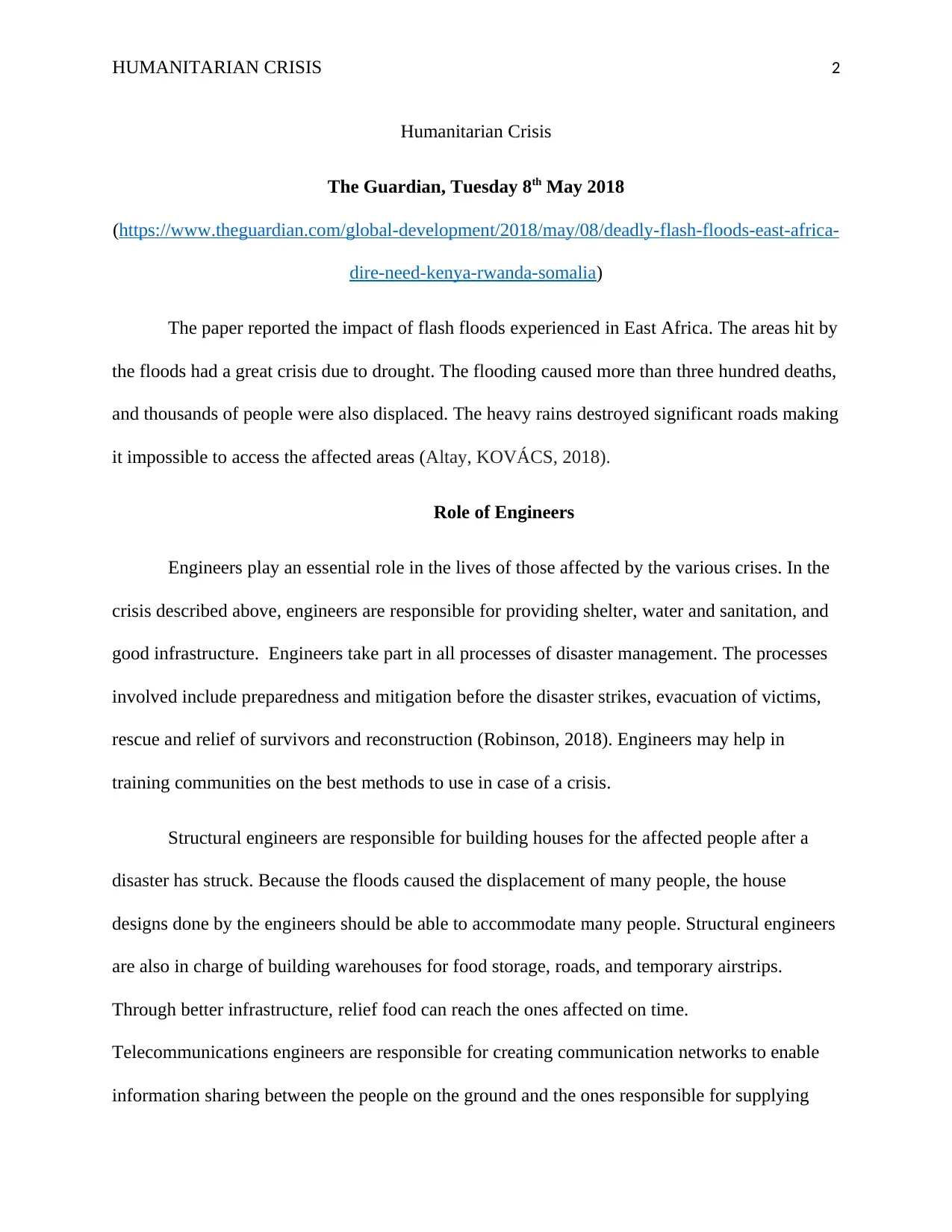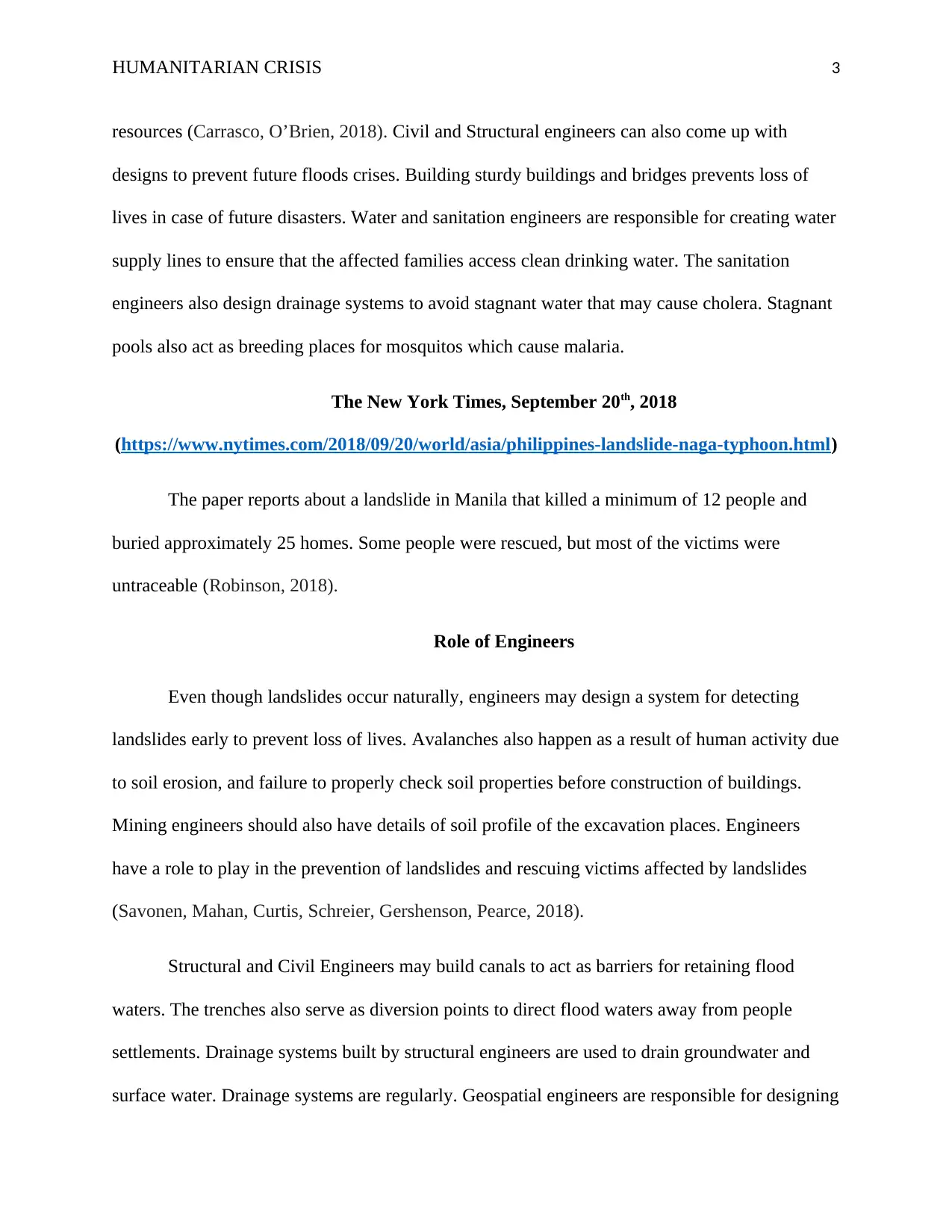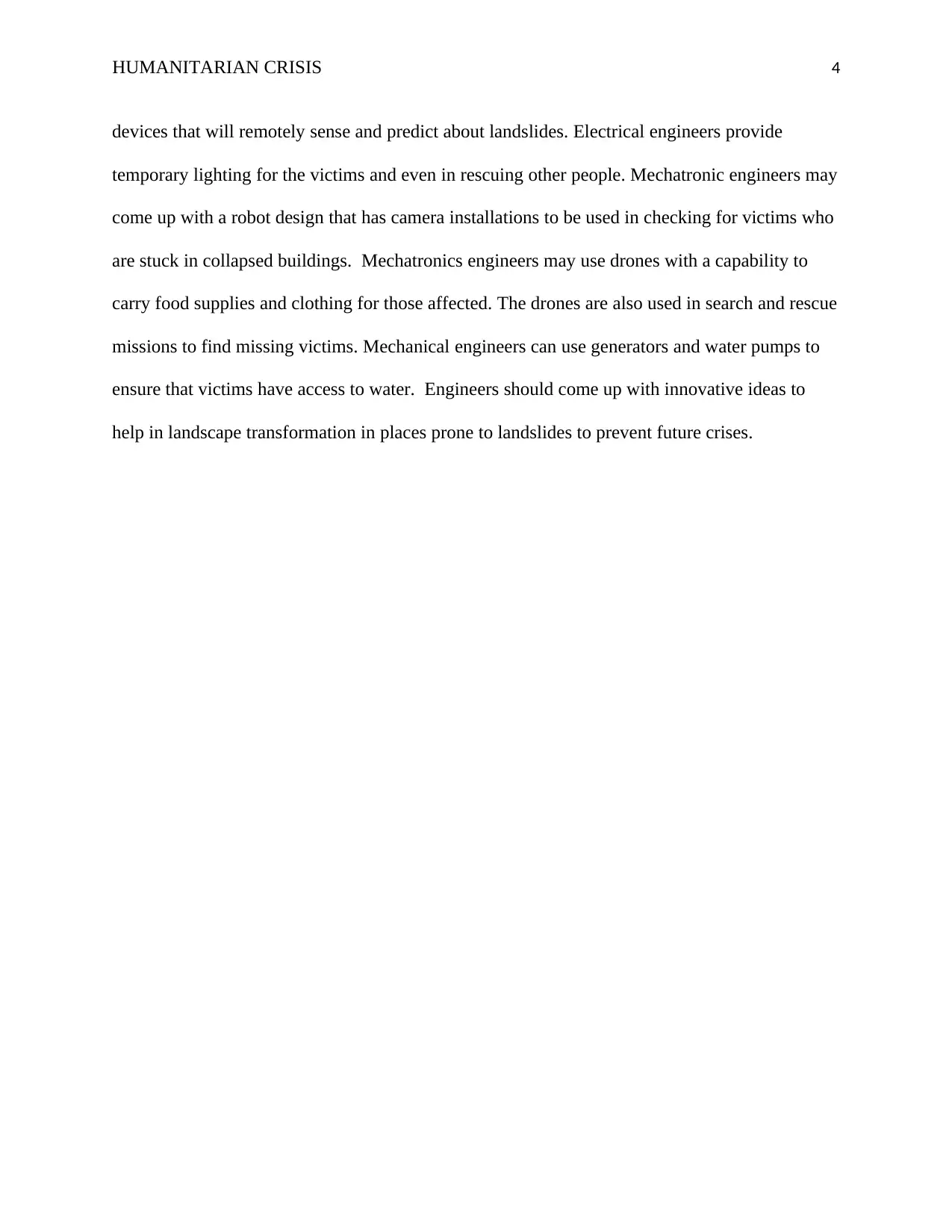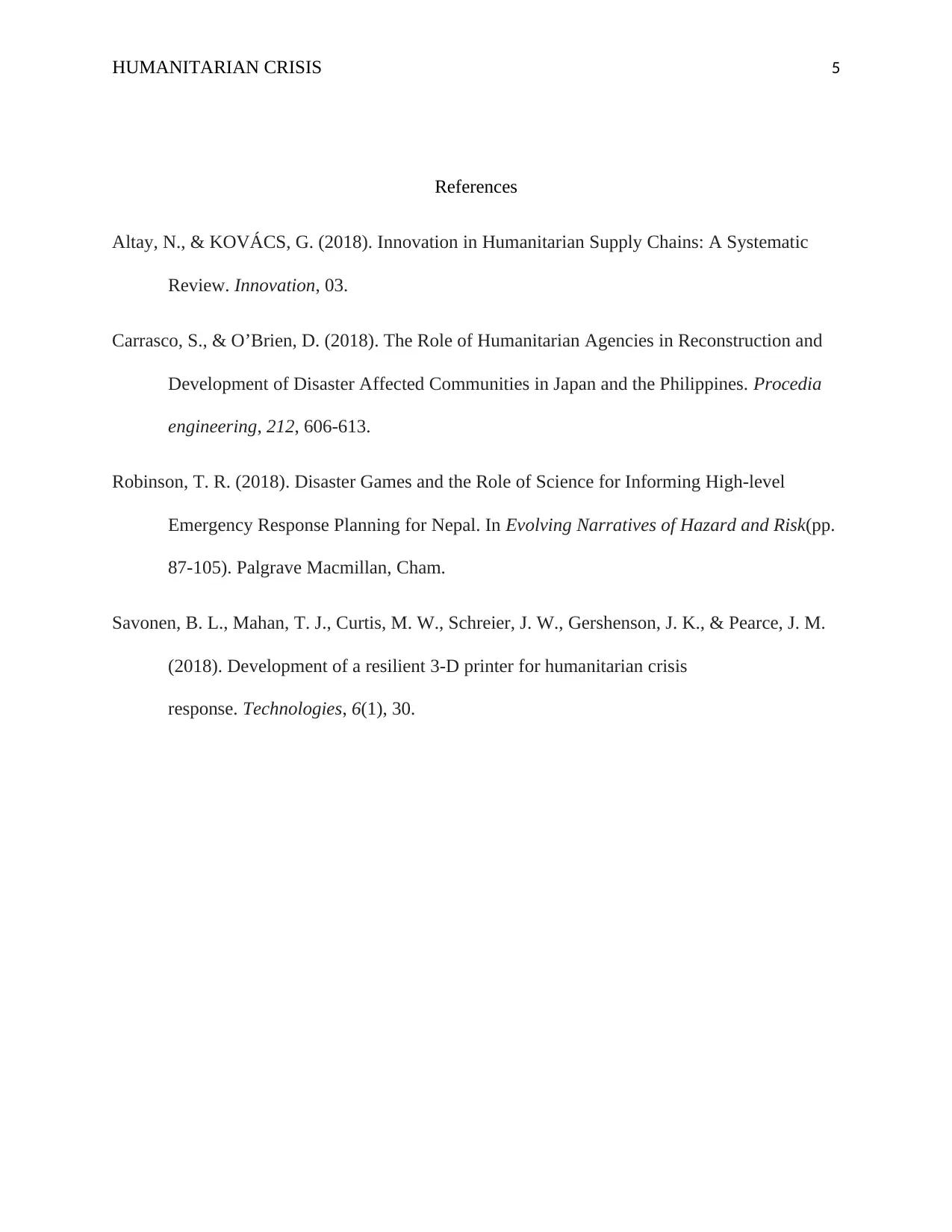Analysis of Humanitarian Crises and the Role of Civil Engineers
VerifiedAdded on 2023/05/29
|5
|883
|124
Report
AI Summary
This report examines the crucial role of engineers in addressing humanitarian crises, focusing on two specific examples: flash floods in East Africa and a landslide in the Philippines. It highlights the diverse contributions of various engineering disciplines, including structural, telecommunications, civil, water and sanitation, geospatial, electrical, mechatronic, and mechanical engineering. The report details how engineers are involved in all stages of disaster management, from preparedness and mitigation to rescue, relief, and reconstruction. Specific examples of engineering interventions are provided, such as building shelters, providing clean water and sanitation, designing infrastructure to prevent future disasters, and developing technologies for communication, search and rescue, and landscape transformation. The report emphasizes the importance of innovative solutions to address the challenges posed by humanitarian crises and underscores the critical role engineers play in saving lives and supporting affected communities.
1 out of 5











![[object Object]](/_next/static/media/star-bottom.7253800d.svg)